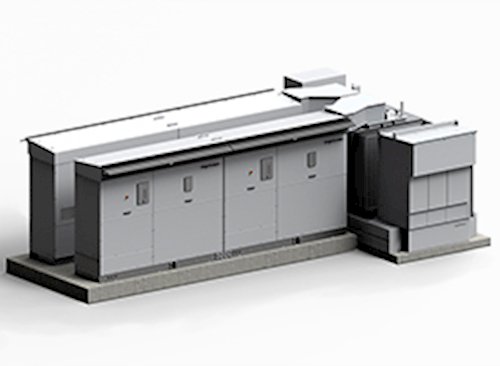Inverter stations, essential components of solar power systems, have an environmental impact that is generally positive when viewed in the context of their role in facilitating the use of renewable energy. However, like all manufactured products, they do have some environmental footprint related to their production, operation, and disposal. Understanding this impact helps in developing strategies to minimize the environmental consequences while maximizing the benefits of solar energy. Here’s an overview of the environmental impact of inverter stations:

Positive Environmental Impacts
- Facilitating Clean Energy: The primary environmental benefit of inverter stations is their role in converting DC electricity generated by solar panels into AC electricity, making solar power usable for homes, businesses, and the grid. By enabling the use of solar energy, inverters help reduce reliance on fossil fuels, decrease greenhouse gas emissions, and combat climate change.
- Efficiency Improvements: Advances in inverter technology, such as the development of models with higher conversion efficiencies and the incorporation of Maximum Power Point Tracking (MPPT), mean more solar energy can be converted into usable power with less waste. This increases the overall efficiency of solar power systems, contributing to a reduction in the carbon footprint per unit of electricity generated.
Environmental Footprint of Production
- Manufacturing Impact: The production of inverter stations involves the extraction and processing of raw materials, manufacturing of components (like semiconductors, capacitors, and cooling systems), and assembly, all of which consume energy and resources. The environmental impact includes emissions from manufacturing processes and the use of materials such as rare metals, which may have significant environmental footprints.
Operational Phase Impacts
- Heat Generation: Inverters convert DC to AC power with high efficiency, but the process is not 100% efficient, leading to the generation of heat. This thermal energy is a form of energy loss and requires ventilation or cooling systems to manage, which can consume additional energy, albeit minimal in comparison to the energy produced by the solar power system.
End-of-Life Considerations
- Waste and Recycling: At the end of their operational life, inverters become electronic waste. The environmental impact depends on the disposal and recycling practices. Proper recycling can recover valuable materials and reduce the environmental footprint, but improper disposal can lead to pollution and waste management issues.
Mitigation Strategies
- Sustainable Manufacturing Practices: Manufacturers can adopt more sustainable practices, such as using recycled materials, minimizing waste, and reducing energy consumption during production, to mitigate the environmental impact of inverter stations.
- Product Lifecycle Management: Designing inverters for durability, repairability, and ease of recycling can extend their useful life and reduce their overall environmental impact. Establishing take-back and recycling programs for end-of-life inverters can further minimize waste.
- Energy Efficiency Standards: Continual improvements in inverter efficiency standards can reduce energy losses during operation, lowering the indirect environmental impact associated with additional cooling or ventilation needs.
- Research and Development: Investing in research to find alternative materials with lower environmental impacts and to improve the efficiency and lifespan of inverters can contribute to reducing the ecological footprint of solar power systems over time.
While inverter stations have an environmental footprint related to their production, operation, and disposal, their role in enabling the use of clean, renewable solar energy presents a net positive impact on the environment. Efforts to minimize the negative impacts through sustainable manufacturing, improved product lifecycle management, and ongoing technological advancements are essential to maximizing the environmental benefits of solar power systems.
